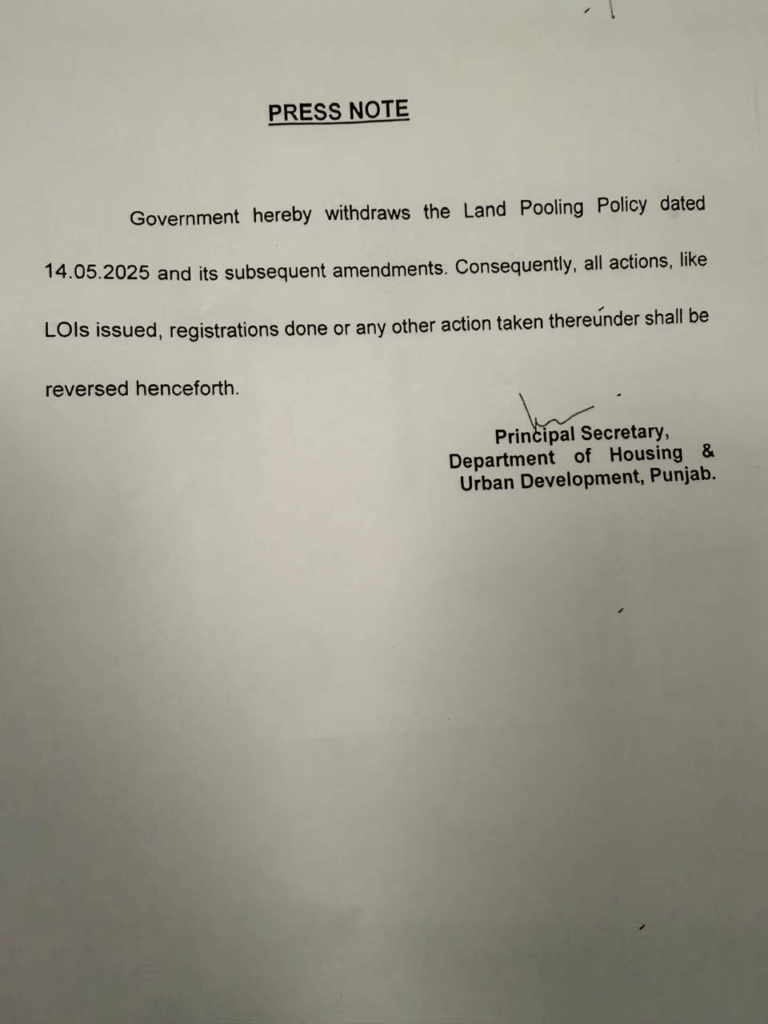Chandigarh 12 Aug 2025 : The Punjab government has officially withdrawn the controversial Land Pooling Policy. This decision comes after the Punjab and Haryana High Court imposed a temporary stay on the policy and following growing public opposition. The High Court had given the government four weeks to fix the shortcomings in the scheme.
It is worth noting that farmers protested against the Land Pooling Scheme even today. In its order, the court stated that the policy lacked mandatory Social and Environmental Impact Assessment, had no provisions for the rehabilitation of landless laborers and other affected groups, did not include a grievance redressal mechanism, and provided no clarity on timelines or budgets.
In recent weeks, farmer unions, opposition parties, and local residents had organized tractor marches, door-to-door campaigns, and demonstrations against the policy. Opponents claimed the scheme was an attempt at “land grabbing” that would have a severe impact on agriculture and farmers’ livelihoods.
In light of public opposition and legal challenges, the government has finally announced the withdrawal of this decision — a move that is also being seen as a major political setback.

What is the Land Pooling issue?
The Punjab government had introduced the “Land Pooling” policy for planned urbanization. Under this scheme, around 40,000 acres of usable land across 27 cities in Punjab was to be acquired. The acquired land was to be developed by the Punjab government into residential areas, called Urban Estates. However, farmers’ organizations alleged that the policy was a conspiracy to evict them from their fertile lands and promote real estate projects.
Where and how much land was to be pooled?
- Ludhiana: 24,000 acres
- Mohali: 2,535 acres
- Amritsar: 4,464 acres
- Pathankot: 1,000 acres
- Jalandhar: 1,000 acres
- Patiala: 1,150 acres
- Bathinda: 848 acres
- Sangrur: 568 acres
- Moga: 542 acres
- Nawanshahr: 338 acres
- Ferozepur: 313 acres
- Barnala: 317 acres
- Hoshiarpur: 550 acres
- Kapurthala: 150 acres
- Batala: 160 acres
- Phagwara: 200 acres
- Tarn Taran: 97 acres
- Sultanpur Lodhi: 70 acres
- Nakodar: 20 acres
- Gurdaspur: about 80 acres
This was the scale and distribution of land the government had planned to pool under the policy.
Summary :
Punjab government introduces major changes to the land pooling scheme, aiming to ensure better compensation, transparency, and benefits for farmers involved in development and infrastructure projects.


